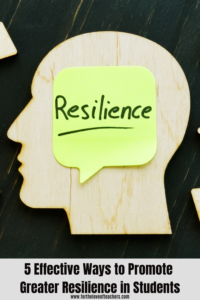
Every setback is a setup for a comeback! I first heard these words in a movie, only to learn they are sourced from one of Willie Jolley’s bestselling novels. Challenges are part of life, but the more we focus on them, the more we get frightened to take a step forward. That’s why many back out when they should least do it.
In a life that is full of highs and lows, we see resilience as a fundamental push factor for greater achievements. The ability to understand, withstand, and adapt amidst challenges, hard times, or crises is what resilience means. People who exhibit resilience tend to have more positive outcomes than those who lack them. It means resilience is a reinforcement that can be developed and relied upon during one’s lifetime.
The American Psychological Association explains that resilience is an outcome of successfully adapting to challenging life experiences, especially through mental flexibility and adjustment. On the other hand, psychological research also confirms that the skills associated with more positive adaptation can be cultivated and practiced.
People who are not resilient are more likely to become overwhelmed by difficult situations and tend to give up more easily. However, resilient people are more likely to take challenges positively with the hope that they can learn from the situation or better themselves. Resilience is vital for self-management in both professional and personal life.
Pediatrician Ken Ginsburg, MD, a specialist in adolescent medicine, developed the 7 Cs model of resilience to help teens build the skills to be happier and more resilient. The 7Cs as per the American Academy of Pediatrics include; Competence, Confidence, Connection, Character, Contribution, Coping, and Control. These components showcase the link between personal strengths and external forces.
Globally, teachers need to help students build resilience for them to face and manage stressful situations in and out of school. Now that the learning culture is changing, many students may find it difficult to adjust or even ask for help. Therefore, here are some of the most 5 ways to promote resilience in students.
Push for a Growth Mindset
A growth mindset is the opposite of a fixed mindset. A growth mindset generally means that one believes that their abilities can be developed or changed through effort or study. On the other hand, those with a fixed mindset think that their abilities are innate. The term “growth mindset” was first brought forward by Carol Dweck, a psychologist, and researcher at Stanford University. This was in a 2006 book titled “Mindset: The New Psychology of Success”.
In her book, Carol stresses that one exhibits a growth mindset when one believes they’re not limited by inherent traits or abilities. As per Harvard Business Review, a growth mindset pushes for recognition of effort, learning, or progress that is a result of seeking help, trying new strategies, and capitalizing on setbacks.
Don’t allow your students to believe that asking for help is a sign of weakness. This perception only increases agony and makes difficult times more challenging for them.
Students with a growth mindset can face fear, challenges, rejection, and persist amidst difficulty. They are also able to set SMART Goals and identify ways through which they can attain their SMART goals.
When they are taught to have a growth mindset, they realize that they can work to improve their academic skills and performance. As a teacher, try to foster a growth mindset by encouraging your students to request help or talk to others when facing challenges.
Also, try to praise effort rather than one’s intelligence. The more you praise those students who seem to be naturally intelligent, you tend to pave the way for low esteem in those who aren’t good performers.
Rather, when a student shows a willingness to learn, utilize new strategies, or contribute more in class, let them know that all of this matters. In this way, they will learn to persist despite how challenging situations are. Having said that, helping students attain a growth mindset is one of the most effective active learning strategies.
Foster optimism in the classroom
People who think positively tend to be optimistic. We live in a competitive world where some students measure self-worth by their performance in class or what others say about them. This leads to a negative thought pattern, which is common among adolescents and youths. Negative thinking patterns are highly linked to depression, eating disorders, and poor management of stress.
The adolescence stage is a critical phase in one’s life. That’s the time when students tend to be creative, social, and eager to try out new things. However, the World Health Organization confirms that 14% of people aged 10 to 19 experience mental health conditions.
The leading mental health concerns include depression, addiction, anxiety, and behavioral disorders. There are many causes of mental health disorders in students some of which include rejection, stress, bullying, and classroom stress among others.
As a teacher, you can encourage your students to think positively by teaching them to concentrate on the ultimate goal. Teach them that they can’t always control life events or outcomes, but they can, however, work things out for personal growth and development. This will even teach them how to manage anxiety in the classroom and help them face the future without fear.
During class, let students share their life experiences for others to learn that they are not alone. Most times negative thought patterns prevail because people fail to share their experiences or tend to believe that others are way better than them. However, through sharing life stories, students are encouraged and motivated to stay positive and never to give up no matter the circumstances.
Promote greater self-awareness
Self-awareness involves understanding one’s traits i.e. strengths, weak points, emotions, feelings, and thoughts. Self-awareness helps one evaluate and manage emotions and actions during their lifetime.
Research by The Eurich group found that people with self-awareness are generally happier and have better relationships. When people understand themselves, they are able to see themselves clearly, are more creative, and confident, and build stronger relationships.
Self-awareness does not make the problem disappear, but one is encouraged to develop strength and face the challenge. More so, one gets the ability to see past the challenges and realize that some challenges come as opportunities.
Help your students become more aware of themselves in order to build resilience. Students who realize their weaknesses and utilize their strengths to adapt, display a higher level of resilience. When students carry a strong sense of self-awareness, they know what they are capable of. Besides, they also have a clear understanding of the areas for improvement. In either case, self-awareness acts as a foundation for greater optimism and motivation.
By teaching students self-awareness they will be able to find ways of performing better. They will see challenges and competition as tests for self-improvement, ultimately building their resilience.
Cultivate challenging scenarios
Want your students to develop greater resilience? Expose them to challenges or encourage them to take risks. Many people discover their ability when exposed to challenges and it’s only through these times that they attain problem-solving skills or become creative. Similarly, students need to realize that life isn’t a bed of roses.
As a teacher, you can also outshine your profession by going the extra mile to help students develop their capabilities. Here are a few things to consider here to promote resilience in your students;
- Create Leadership Positions: Leadership during the schooling phase helps prep students for future responsibilities. It’s only through being in a leadership position that a student will learn accountability, confidence, the importance of teamwork, and creativity. Apart from leadership positions, assign responsibilities to them to learn how to plan or adapt during challenging times.
- Encourage Goal Setting: To attain sizeable goals, one needs to be psychologically, emotionally, and physically resilient. Some things don’t come easy and it’s through resilience that they are attainable.
- Teach Them to Take Risks: Daniel Vollrath, a high school teacher likens resilience to a stress ball. A stress ball is resilient because it springs back to its original shape after being squeezed. That’s why students must be encouraged to take responsible risks in order to develop higher resilience.
Promote Collaboration
Sometimes all it takes is collaboration. Collaboration among students helps them plan activities, generate better ideas, and aim for bigger goals. The power of collaborative initiatives is evident today in many aspects of life. By collaborating, problems are solved with greater ease since there is sharing of ideas and opinions. Outcomes are also largely better.
Likewise, teachers must push for collaborative activities such as debates, group assignments, and competitions in class. Collaboration can help students build momentum and to adapt easier. The bigger the task, the more students become creative and determined to tackle the problem enthusiastically.
Whether you’re in a traditional or remote teaching setup, there are a few things you can consider to promote collaboration among students. Discussion and web-conferencing tools like Zoom facilitate virtual classroom collaboration. Group assignments and projects also require a high degree of collaboration. Usually, students must work together or resolve problems for a common goal. With all this, you will be helping them to learn resilience which will help them during their lifetime.
These are just a few ways to promote greater resilience in your students.
Share how you promote resilience in the comments.
 About the Author: “Doing what you love is the cornerstone of having abundance in your life.” Wayne Dyer’s thoughts are well suited to Kiara Miller. She has been working as a content marketing professional at ‘The Speakingnerd’. Her passion for writing is also visible in the innovative joys of the material she provides to her readers.
About the Author: “Doing what you love is the cornerstone of having abundance in your life.” Wayne Dyer’s thoughts are well suited to Kiara Miller. She has been working as a content marketing professional at ‘The Speakingnerd’. Her passion for writing is also visible in the innovative joys of the material she provides to her readers.
Thanks for reading!
If you like it, then pin it!



Christine Weis is a passionate educator, classroom management coach, wife, and mom of two busy boys. She enjoys teaching, writing, and creating resources for teachers.




We are working on this with my kinder son! Such great tips!
I Cultivate challenging scenarios in all my learning periods. I do this to foster thinking at their most critical level and imagination plus creativity!
It is worth reading post and very important factors are listed here. The young children should be aware of all these factors. Fostering optimism is very necessary for everyone. When a child learns to stay positive , he/ she later in life become more confident to deal with the challenges of life. Great post!!
I’ve been looking for ways to build resilience in my child. My opinion, resilience is super important these days and I’ve seen people who have 0 resilience and they just don’t do very well so it’s important for me to try to encourage my child to develop these skills.
I love these tips and ideas. Life is hard, and the ability to roll with the ups and downs is vital. The sooner kids can develop those skills, the better
Collaboration and leadership are both big ones in my opinion. They really give students a chance to stretch their legs, as it were.